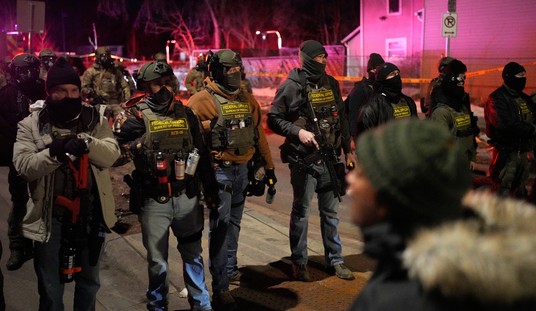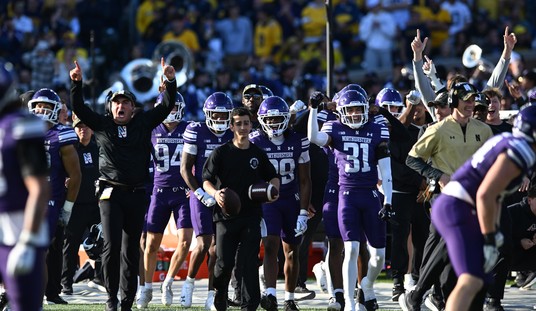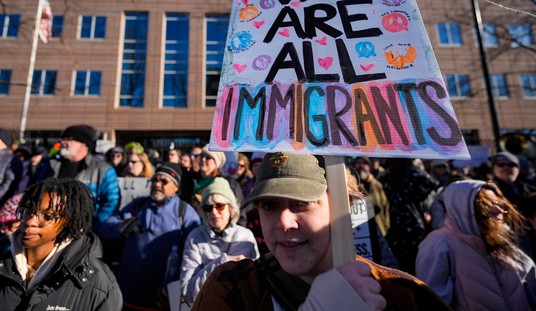Just the other day, the New York Times ran a story highlighting a welcome bit of good news in a year filled with far too many stories of violence and mayhem. In New York City, once considered one of the most violent places in the nation, they are on track to set a record for the fewest homicides (and most other violent crimes except rape) seen since the 1950s. This is a truly remarkable feat and the city should be rightly proud of such an accomplishment. In fact, barring some serious, horror show style event this weekend, the figures are a cause for celebration.
It would have seemed unbelievable in 1990, when there were 2,245 killings in New York City, but as of Wednesday there have been just 286 in the city this year — the lowest since reliable records have been kept.
In fact, crime has fallen in New York City in each of the major felony categories — murder and manslaughter, rape, assault, robbery, burglary, grand larceny, and car thefts — to a total of 94,806 as of Sunday, well below the previous record low of 101,716 set last year.
If the trend holds just a few more days, this year’s homicide total will be under the city’s previous low of 333 in 2014, and crime will have declined for 27 straight years, to levels that police officials have said are the lowest since the 1950s.
So can we all just chalk this one up as a win and go for a stroll around our much safer streets? Perish the thought. Despite having recorded fewer murders than Baltimore while having more than fourteen times the population (and less than half as many as Chicago which has only one quarter as many people), this story couldn’t be told without an argument breaking out as to how New York managed it and why it worked. Two camps quickly emerged in this debate. One was touted loudly in the linked NY Times piece, crediting the city’s “rejection” of broken windows policies and ceasing the “racist” practices of stopping and searching people in high crime areas, while exercising “greater restraint” in dealing with suspects.
Most any cop will tell you that more personal involvement with the community and relationship building are definitely part of the story, but that hardly accounts for all of it. Crime rates were falling long before the unrest coming out of Ferguson and the other high profile protests which erupted around the country in its wake. Smarter, focused and more effective policing played a huge role. (More on that in a moment.)
But in the search for other explanations besides a kinder and gentler police force, other theories arose. One of them which has drawn quite a backlash came from Heather Mac Donald at National Review. While she makes some valid points, her overall description of the observed phenomenon focused on the “gentrification” of high crime areas, paying particular attention to shifts in racial distribution.
New York City’s formerly high-crime neighborhoods have experienced a stunning degree of gentrification over the last 15 years, thanks to the proactive-policing-induced conquest of crime. It is that gentrification which is now helping fuel the ongoing crime drop. Urban hipsters are flocking to areas that once were the purview of drug dealers and pimps, trailing in their wake legitimate commerce and street life, which further attracts law-abiding activity and residents in a virtuous cycle of increasing public safety. The degree of demographic change is startling. In Brooklyn’s Bedford-Stuyvesant neighborhood, for example, the number of white residents rose 1,235 percent from 2000 to 2015, while the black population decreased by 17 percent, reports City Lab. In Bushwick, Brooklyn, the number of whites rose 610 percent over that same decade and a half; the black population was down 22 percent. Central Harlem’s white population rose 846 percent; the black share dropped 10 percent. In 2000, whites were about three-quarters of the black population in Brownsville-Ocean Hill; by 2015, there were twice as many whites as blacks. In 2000, whites were one-third of the black population in Crown Heights North and Prospect Heights; now they exceed the black population by 20,000. The Brooklyn Navy Yards has now been declared the next cool place to be by the tech industry. Business owners are moving their residences as well as their enterprises to the area.
This demographic transformation has enormous implications for crime. A black New Yorker is 50 times more likely to commit a shooting than a white New Yorker, according to perpetrator identifications provided to the police by witnesses to, and victims of, those shootings. Those victims are overwhelmingly minority themselves. When the racial balance of a neighborhood changes radically, given those crime disparities, its violent-crime rate will as well. (This racial crime disparity reflects the breakdown of the black family and the high percentage of black males — upwards of 80 percent in some neighborhoods — being raised by single mothers.)
It’s a shame that Mac Donald chose to focus the initial part of her essay on such graphic racial composition numbers because she goes on to make a number of other excellent points about social dynamics and crime. Sadly, those seem to get lost in the flurry of responses to her comments on gentrification. First of all, that’s such a heavily loaded word these days, providing immediate fuel for fires to be set by social justice warriors, that it distracts from the important topic at hand. It’s true that police records will show that black New Yorkers have historically committed many of these crimes at far higher rates than their fellow white New Yorkers on a per capita basis, but it’s also true that the vast majority of crimes take place in areas of low income, poor schools, high rates of drug and alcohol abuse, restricted opportunity and failing infrastructure. Sadly, this coincides with the areas with the largest minority populations.
The point here isn’t that “a bunch of black people moved out and a lot of white people moved in.” It’s that a lot of unemployed, low-income people moved out and a bunch of wealthier people willing to start up businesses and also patronize those businesses moved in. The fact of the color of anyone’s skin has nothing to do with falling crime rates when compared to the reality of increased prosperity, jobs and infrastructure. The author is absolutely correct, however, in pointing out that more prosperity in any given area almost always leads to significantly less crime. And we’ve also seen a welcome reduction in anti-cop rhetoric in the media in 2017, which may have cooled off some of the fires which burned far more brightly for the five previous years.
But beyond all of those arguments, it’s worth stopping to recognize that underlying all this angst is the simple fact that New York City’s police department found a way to tame an out of control crime problem. More use of modern technology, better communications and deploying resources in the most crime-afflicted areas produced serious dividends. It’s a process which was already ongoing long before the current debates over police shootings and all the rest. And, yes, there was a significant problem in building trust with the public. Programs aimed at mending fences and getting more citizens to buy in as part of the solution rather than part of the problem have helped as well.
So just this once, perhaps we can take off our partisan hats and offer some compliments for a job well done to the NYPD. They’ve accomplished something remarkable and that shouldn’t be lost in all of the ideological infighting which seems to define (and ruin) every achievement we manage.








Join the conversation as a VIP Member